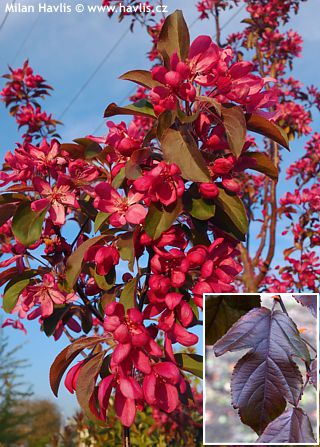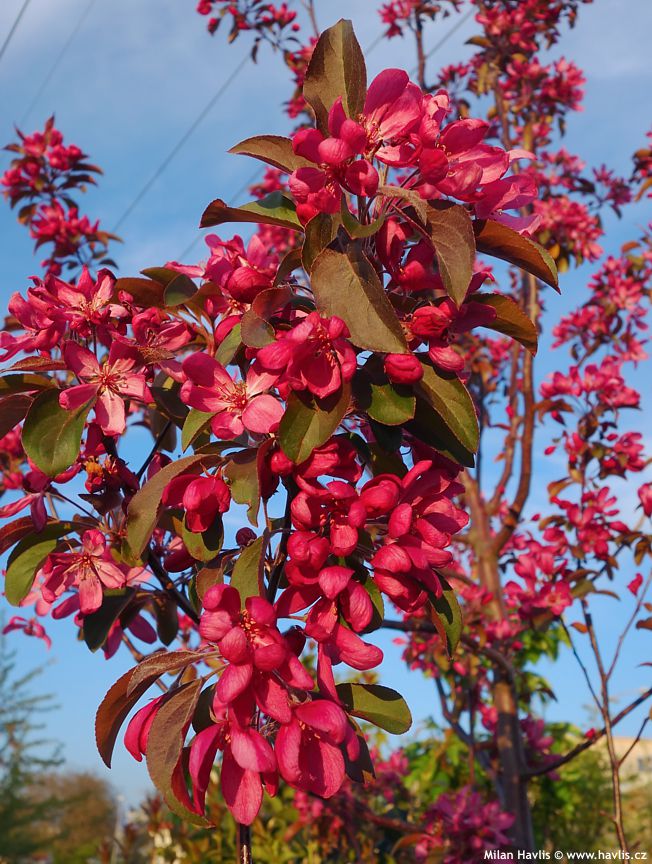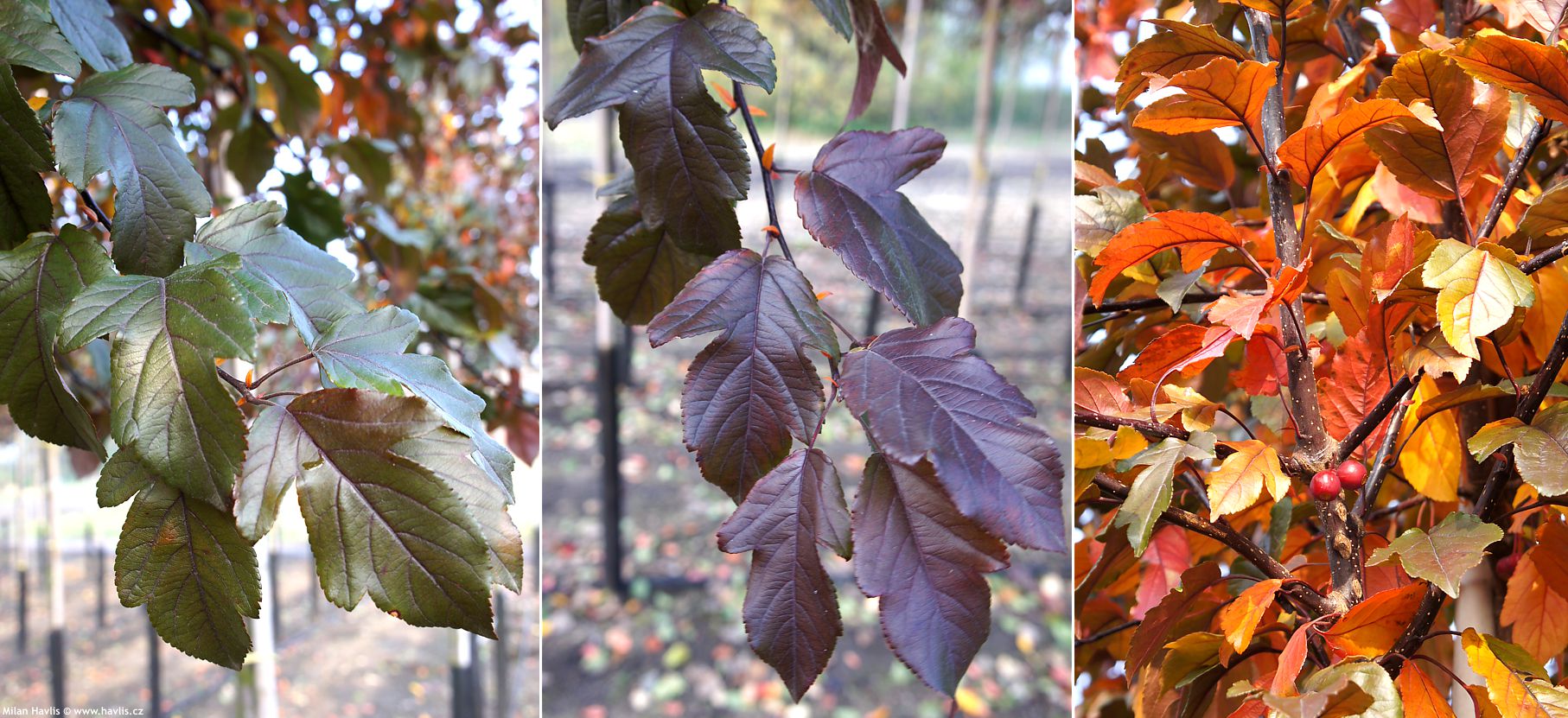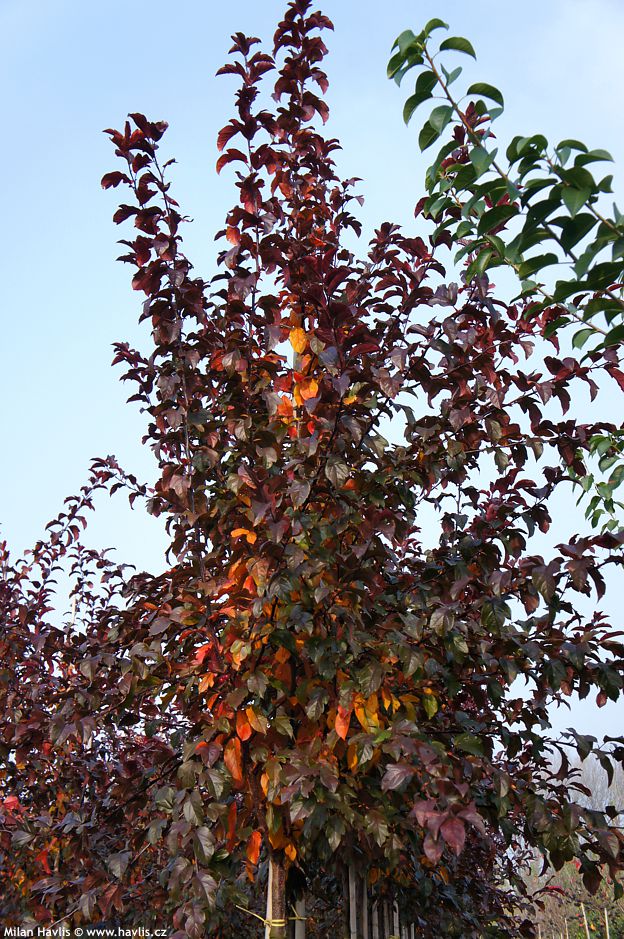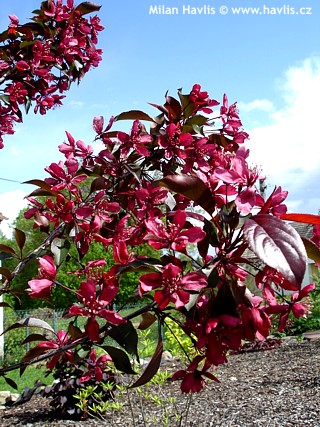Malus toringo 'SCARLETT' Siebold's crabapple
Scarlett crabapple is a fantastic addition to the collection of spring flowering ornamental apples and cherries. This one, however, has more than one feature to look at (just like Scarlett Johansson who may have been a reason why this tree got its name 😊
Scarlett is a Siebold’s crabapple with a profusion of bright purple-pink flowers in mid spring. The leaves are deciduous and appear during blooming. First leaves are typically ovate but from the end of spring the tree starts producing larger leaves with 3 lobes at the tips of branches. They are glossy, deep maroon as they emerge, and keep some maroon to purple red shades throughout the whole season if fully insolated. Leaves inside the canopy are olive to dark green with red veins. In autumn purple leaves turn dark carmine red, and green leaves change to fiery orange and golden. They fall off very late so you can enjoy a long period of autumn colours. Fruits are small, maroon, and persist on the tree until spring.
Unlike many other crabapple varieties Siebold’s crabapple naturally forms a dense canopy in a somewhat relaxed pyramidal shape with slightly arching branches in maturity. It grows at a slow to medium fast rate. Pruning, if needed, should be carried out in the middle or at the end of winter.
Apple trees will grow in most soils but do best in well-drained but evenly moist, fertile, preferably acid soil for best autumn colours. They don’t like road salt. When planting it, make sure the root-ball is well soaked with water and trees with trunks need to be staked to a strong support for at least 3 years after transplanting. Fully hardy to min. -29 °C (USDA zone 5).
Last update 18-11-2011; 30-12-2022

667,25 Kè

1 211,25 Kè

1 211,25 Kè

5 423 Kè
Goods are shipped all over Europe. For Russia and U.K. and for further details please read about SHIPPING OPTIONS HERE.
Are you interested in a serious discount for orders NOV-FEB? Check your options here.
THE PRICES INCLUDE VAT of 15%. For quick conversion you can use 1 CZK = approx. 0.04 EUR
- STANDARD QUALITY - Plants of this group are 1st class quality with number of branches and overall density adequate to their size and age, considering they were container grown.
- DE LUXE QUALITY - This label guarantees a luxurious quality of manually selected plants that, compared to their height and age, are exceptionally dense and beautiful.
- EXTRA - These plants are usually mature and bigger specimens with exceptional overall appearance.
- STANDARD (as described in the plant form) means a tree with a trunk of 190-210 cm and a crown at the top, unless specified differently. The commercial size for trees is their girth measured in the height of 1m from ground.
- HOBBY - These plants are of the same quality as our standard-quality plants but younger and therefore cheaper.
- SHRUB - a woody plant with branches growing bushy from the ground level.
- HALF-STANDARD or MINI-STANDARD - a small tree with shorter trunk, its size is usually specified.
- FEATHERED - These are trees with branches growing already from the base of the trunk and up along the stem.
- GRASSES and PERENNIALS - Sizes given usually read the diameter of the pot or the clump, as specified.

































